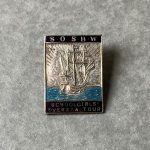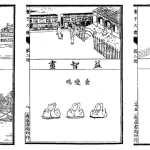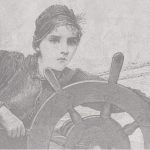Who won the Cold War? At the turn of the millennium, the United States seemed victorious in terms of technological development. As the Chinese magazine The World of Technology and Trade marveled in 1994, the US was at the forefront of the “computer trade wars” in marketing computers specifically to children, who could learn all about the world from the safety of their own homes.[1] The Space Race had long pressured both Americans and Soviets to invest in children’s education. Already in the 1960s, Seymour Papert (1928-2016) piloted a children’s software program at the MIT Artificial Intelligence Laboratory.[2]
By the 1980s, some American children were learning to code on home Apple computers.[3] At the same time in the 1980s, the Soviet Union was holding summer camps to teach computer literacy, but many participants never personally used computers.[4] In the ensuing decades, it must have seemed that American children enjoyed an advantage. But then, how do you define success? The Chinese magazine implied that American success was based on not only the development of technology but also ready access to products, as well as children’s exposure to worldly knowledge while maintaining their physical safety and comfort. But what about children’s education, both from the perspective of mastery and of personal fulfilment by children themselves?
One American, Paul Zeitz, reported that when he visited the Moscow in 2006, many mathematicians assumed that the former Soviet bloc had come out ahead in the competition for supremacy in math education. Eastern Europeans had “math circles,” clubs which included people across a range of skill sets in collective problem-solving of questions to which they genuinely did not know the answers. The semi-competitive nature of these circles complemented math Olympiads.[5] In 2006, Zeitz and others were especially impressed by mathematician Alexander Zvonkin (b. 1948)’s work with math circles for preschool children. Zvonkin worked with a small group of individual children, including his son and then daughter, and focused on their own independent psychological development. This focus differed greatly from the “’theory of step-by-step formulation of mental actions’ once so popular in the USSR,”[6] and the state-led approach taken by computer education summer schools. Perhaps for this reason, his story has thus been left out of the emerging field of computer history.[7]
Zvonkin published his journals serially, and Zeitz helped him translate the book into an American edition called Math From Three to Seven. In the book, Zvonkin reflected on the Cold War technological disparity between the US and the USSR. His math circles led him to develop a programming language (not computer software) much like Papert’s Logo.
“In 1981, there already exited a programming language for children, namely, Logo. Like Kid, Logo’s objective was to control the movements of an object (a turtle). However, Logo was much better developed and, more important, was an existing software product. For this reason, today our invention seems rather like a wooden bicycle. I even hesitated to include it in this book. But then I decided that it would be a pity to discard a whole bunch of puzzles as well as the enthusiasm our project had generated first among us, the adults, and then among the kids who were naturally carried away by our excitement. Besides, back then we didn’t even know about Logo, and not only did we not have computers, we didn’t even dream of having them. And, if you think about it, the invention of wooden bicycles is not that stupid. (This subject is surely worth discussing someday.)”[8]
The subject is indeed worth discussing in the wake of the AI revolution. In retrospect, we can see how much Zvonkin’s “wooden bicycle” anticipated the “PC era” of children’s computing education. I assert that Kid is especially relevant precisely because Zvonkin’s child-centered approach did not get buried in technology.
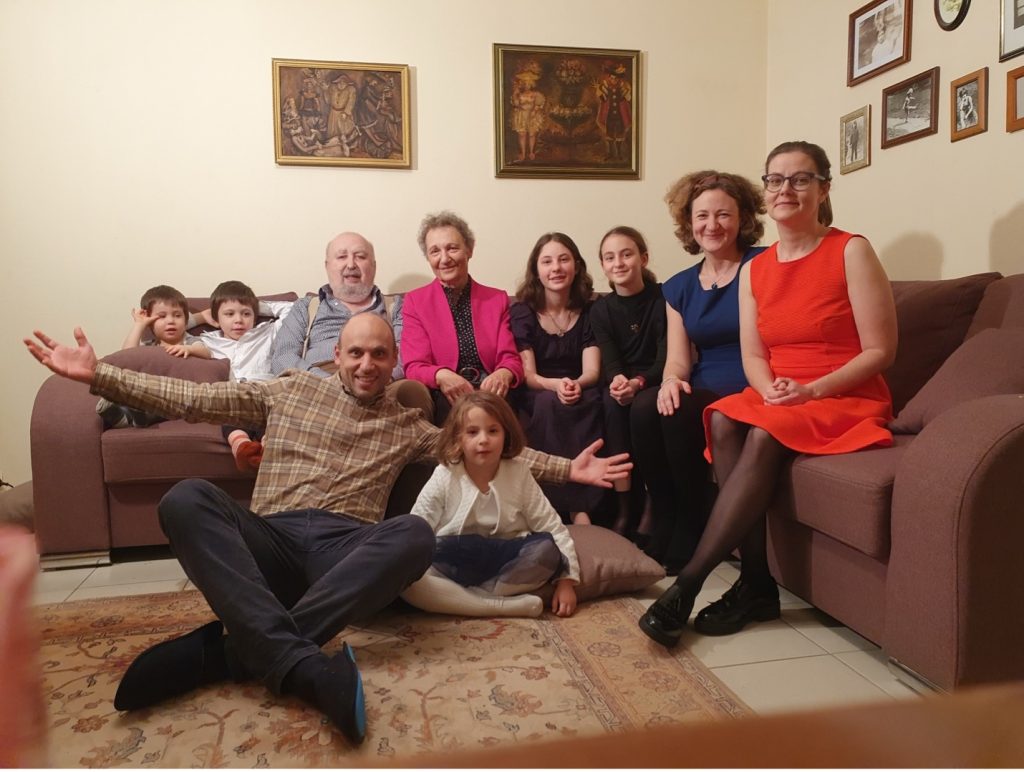
Kid bore remarkable similarities to Logo because both are based on child-centered educational psychology. They were inspired by Jean Piaget (1896-1980), who found that children misunderstand certain basic mathematical principles, such as the idea that a set number of items remain consistent even as they are spread out over space; this insight demonstrated that children have their own developmental understanding of mathematics. Margarita Boenig-Liptsin has shown that Seymour Papert’s work with Jean Piaget was instrumental for his later work on Logo. Papert hoped that Logo could help education become less top-down drilling of math problems, and instead allow children a more bottom-up approach and more “fluency” in mathematics, as one would learn a foreign language. Like Papert, Zvonkin became interested in working directly with children and unlocking the ways that children naturally learn elements of language, especially classification.
The remarkable similarity in Papert and Zvonkin’s coding languages suggests that there may be something universally inherent in child psychology. Zvonkin reproduced Piaget’s experiments. Zvonkin also tried to let children work out problems themselves. He warned that over-instructed children would “cease trusting their own intelligence and experience” and “try instead to guess what the adult wants them to say.”[9] This philosophy was not popular. In the girls’ math circle for his daughter, the mathematician grandmother of one girl gave her the formula for the equation that solved their activity to find unique sequences of necklaces with two beads of one color and three beads of another. The girl dutifully reproduced the right formula and codes—but could not make any more necklaces than before. Zvonkin used the example to prove that children should not parrot answers and instead explore on their own.
Zvonkin favored open-ended questions and puzzles.[10] In one case, he reported observing the children find their own way to the solution, but his “excruciatingly honest son compels me to admit” that he had provided hints.[11] Throughout the journal, his son Dina inserted his own perspective, which often contradicted his father’s interpretation. In this particular case, Dina experimented on his own before becoming convinced of the answer. Dina would sometimes revisit a puzzle to which he had given the wrong answer – after over a year! Dina also spent a lot of time finding answers by trial and error; he would connect the problems to others that the father had not imagined. This, too, reinforced Zvonkin’s idea that everything learned in the math circle, even knowledge as esoteric as Mayan numerical symbols, helped the pupils in some way.
Work with children led Zvonkin, like Papert, to consider coding as a language. Dina inspired some mathematical breakthroughs in his father’s thinking, especially three papers on “symbols for attributes.” Zvonkin noted, “The funny thing is that the idea was inspired by [his son] Dina. Only I didn’t notice it at the time; I reconstructed events from memory and from my notes.”[12] After activities on classification of attributes, Dina reflected, “I think I’ve got it, Dad. You want us to invent symbols for words.”[13] Such comments helped Zvonkin to simplify the chain of logic necessary for classifying objects, and he also unlocked an essential insight; that young children already go through this process when first learning language, but are later asked to repeat these lessons analytically.
Kid developed from sequencing activities in the math circle. The children created unique sequences across multiple material objects, including the girls’ necklaces, a grid, etc. When finding new paths, they then annotated those sequences to create codes. Those codes were the basis for instructions across the grid. The next step was to create a large grid on the floor and to blind the children and make them follow the steps of their instructions, even when they needed to run into the wall. Interestingly, Papert also had students walk in a grid along the floor as well.[14]
There are a few significant observations that Zvonkin noted. The first was – often to his frustration – a lack of methodical thinking in terms of both the sequencing and coding. Instead of eliminating possibilities, children would re-test codes. The second was a difference between “local” and “global” thinking; children would fix a problem that smashed the robot into a wall, but they did not take into account the effect of that change on the larger flowchart of instructions. Infected by the interest of the adults around them, the children often clamored to play with the programming. When the programming made use of set algorithms that they had already developed, Dina found the exercise to be less fun. One might surmise that Dina preferred the wooden aspects of the bicycle.
While Zvonkin may have thought of himself as inventing a “wooden bicycle,” he was really anticipating significant forms of children’s coding in the beginning of the twenty-first century. The “wooden bicycle” is an apt metaphor for how many parents today choose to “start with no-code or low-code options.”[15] As with Kid, children produce symbols as a set of directions on a grid.
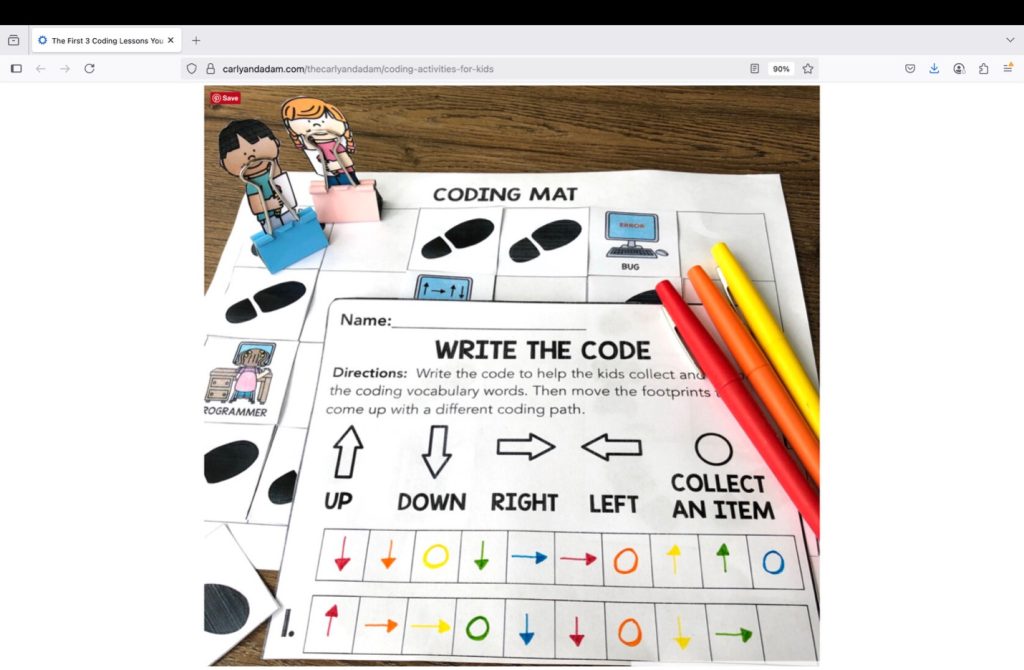
In an overt effort to return to hands-on learning, companies have also rebranded traditional toys as a form of coding or sequencing. For example, the German toy company Hape has market marble runs as education in “the basics of coding.”

Symbols on blocks indicate how the marbles will run, just like the codes also create instructions for movement.
Zvonkin also participated in the return of traditional toys in new contexts. In his journal, Zvonkin recalls going to an experimental school to teach math in a computer lab. Although somestudents enjoyed working Logo, others were bored. Once a child found an old calculating machine, they all lined up to use it. As Zvonkin commented, “Forgotten are dull computers; here you can turn the handle yourself!” The episode reminded Zvonkin of T. Sluzhevskaya’s story of taking children to a zoo, where they were more enthralled by a horse that they could touch and feed, than by all the exotic creatures, such as “crocodiles behind glass, an elephant behind bars.”[16] Zvonkin wrote that the episode could form an “epigraph” to the book. In the foreword to the American edition, Zeitz pointed to this example to argue in favor of concrete methods and materials, often called “math manipulatives,” to elicit the interest children’s interest in “the real world” – almost recalling John Dewey. In a digital world, Zvonkin lamented that “computers have become omnipresent, so there is great potential for misuse”; he didn’t “know of a more stupid pastime” than video games.[17] Zvonkin thus recognized that his preschoolers had engaged in a very different kind of culture of play than those of the post-Cold War “PC era.” His story helps to explain why educators of the PC-era have pushed back against the benefits that the Chinese magazine The World of Technology and Trade thought were so promising in 1994, and have preferred instead for children to crack computer coding through the metaphorical “wooden bicycle.”
Margaret Mih Tillman (she/her) is Associate professor of Chinese history at Purdue University, and author of Raising China’s Revolutionaries: Modernizing Childhood for Cosmopolitan Nationalists and Liberated Comrades, 1920s-1950s.
[1] Chun Shan 春山. “美电脑商大战儿童软件市场 – 中国知网,” [US computer makers compete in children’s software market] 1994. https://chn-oversea-cnki-net.eu1.proxy.openathens.net/KCMS/detail/detail.aspx?dbcode=CJFD&dbname=CJFD9495&filename=JIMO199412077&uniplatform=OVERSEA&v=3MDhxk87rjl5y3R_8a7q9Y55McNcLRwdjHLMk_IQjBvkP8OZZbep7HNAPyf11UA6.
[2] Boenig-Liptsin, “Making Citizens,” Making Citizens of the Information Age: A Comparative Study of the First Computer Literacy Programs for Children in the United States, France, and the Soviet Union, 1970-1990,” (Ph.D., Harvard University, 2015), 120-121.
[3] Macintosh Librarian, The History of LOGO Programming – Apple in Schools (4K), 2021: https://www.youtube.com/watch?v=cwnMhI9XjO8.
[4] Boenig-Liptsin, “Making Citizens,” 255.
[5] Nura Turner, “A Historical Sketch of Olympiads: U.S.A. and International.” The College Mathematics Journal 16, no. 5 (November 1, 1985): 330–35.
[6] Alexander K Zvonkin and Paul Zeitz trans., Math from Three to Seven: The Story of a Mathematical Circle for Preschoolers (MSRI Mathematical Circles Library, Berkeley, Calif., Providence. R.I.: Mathematical Sciences Research Institute ; American Mathematical Society, 2012), 34. Kindle e-book.
[7] Boenig-Liptsin, “Making Citizens,” 252.
[8] Also spelled Alexandre Zvonkine; for more information on Zvonkin, see https://www.labri.fr/perso/zvonkin/.
[9] Zvonkin, Math, 16.
[10] Zvonkin, Math, 19.
[11] Zvonkin, Math, 79.
[12] Zvonkin, Math, 137.
[13] Zvonkin, Math, 137.
[14] Boenig-Liptsin, “Making Citizens,” 201.
[15] Create and Learn Team, “Intro to Coding for Kids” (October 7, 2024) https://www.create-learn.us/blog/intro-to-coding-for-kids/
[16] Zvonkin, Math, 237.
[17] Zvonkin, Math, 148.




